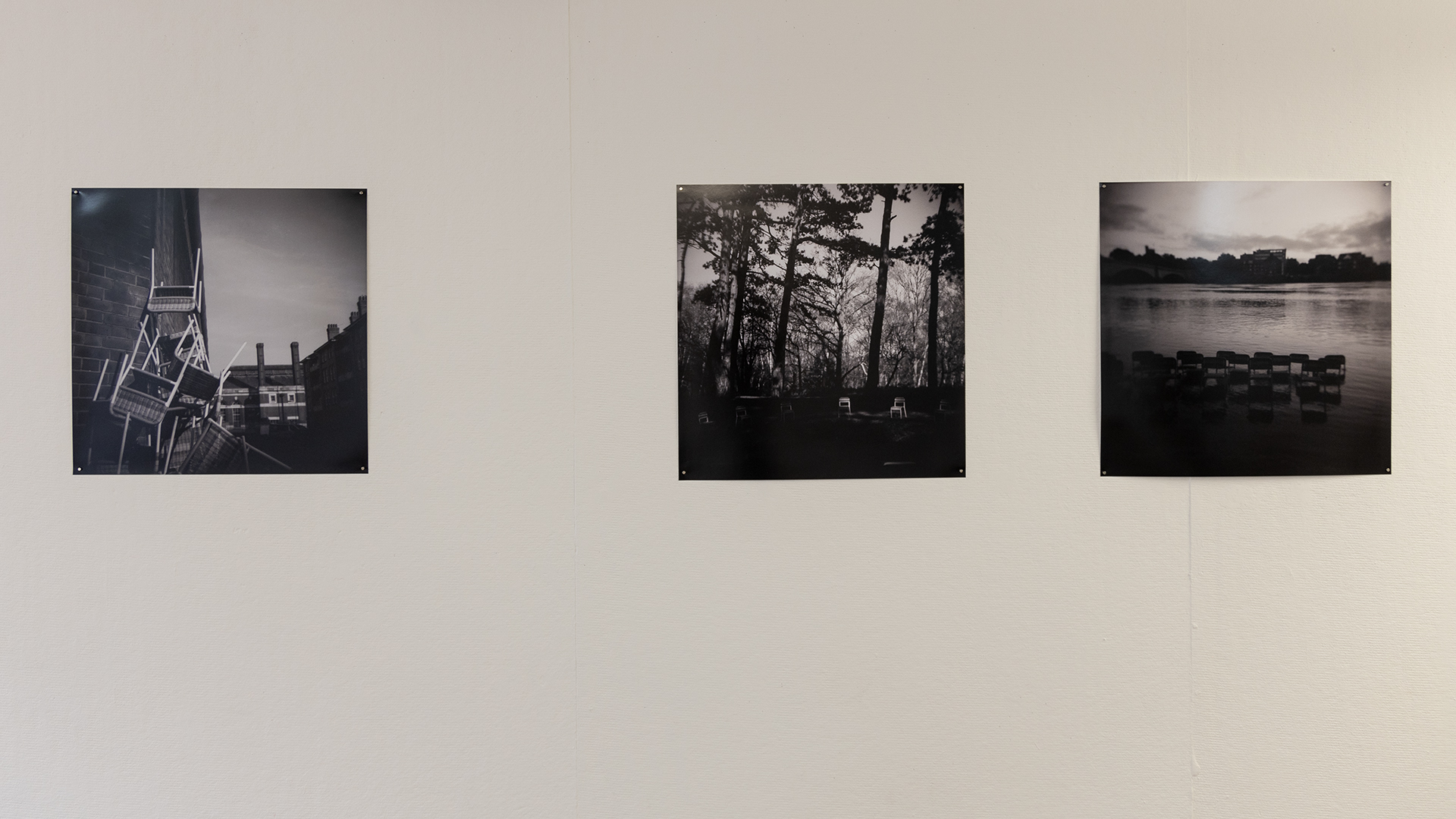Mnemosyne, the goddess of memory, mothered the Muses. From her came all art. Yet what we pay attention to precedes what we remember. Attention is selective, shifting, and deeply personal. It shapes the contours of memory and, in turn, the construction of self.

Memory, too, is not static; it is porous and pliable, a meeting point between past and present, fact and fiction. It is less a record than a re-creation: an act of association, imagination, and storytelling. My work explores this threshold, in the subtle space between perception and recollection.
As Vladimir Nabokov writes in Speak, Memory, recollection is an art: the gathering of fragments into a form both subjective and vivid (Nabokov 1989). Oliver Sacks likewise observed that the brain treats imagined and experienced memories with equal fidelity (Sacks 2013). In this light, memory becomes a generative medium, a playground where meaning is not fixed but continually unfolding.
Here, eighteen child-sized chairs, placed in a landscape, evoke the classroom as more than a physical site, it becomes an open, mutable architecture of memory. Drawing on Gestalt principles¹, I approach memory not as a truth to retrieve, but as a scene to recompose, to blur, sharpen, and shift.
My practice offers a quiet resistance to the notion of meaning as fixed or final. It invites attentive presence without demanding resolution and embraces intuition over explanation. In a world where certainty can flatten complexity and despair can lure us into retreat, I look to memory and imagination as quiet acts of hope, paths that lead us back to possibility.
Reference
¹ Gestalt principles refer to psychological theories developed in early 20th-century Germany, describing how humans naturally organize visual information into unified forms. Concepts such as proximity, similarity, closure, continuity, and figure-ground inform much of visual perception, and serve here as structural tools in the construction of meaning.
As Vladimir Nabokov writes in Speak, Memory, recollection is an art: the gathering of fragments into a form both subjective and vivid (Nabokov 1989). Oliver Sacks likewise observed that the brain treats imagined and experienced memories with equal fidelity (Sacks 2013). In this light, memory becomes a generative medium, a playground where meaning is not fixed but continually unfolding.
Here, eighteen child-sized chairs, placed in a landscape, evoke the classroom as more than a physical site, it becomes an open, mutable architecture of memory. Drawing on Gestalt principles¹, I approach memory not as a truth to retrieve, but as a scene to recompose, to blur, sharpen, and shift.
My practice offers a quiet resistance to the notion of meaning as fixed or final. It invites attentive presence without demanding resolution and embraces intuition over explanation. In a world where certainty can flatten complexity and despair can lure us into retreat, I look to memory and imagination as quiet acts of hope, paths that lead us back to possibility.
Reference
¹ Gestalt principles refer to psychological theories developed in early 20th-century Germany, describing how humans naturally organize visual information into unified forms. Concepts such as proximity, similarity, closure, continuity, and figure-ground inform much of visual perception, and serve here as structural tools in the construction of meaning.